As an increasing percentage of the population is seeking post-secondary education, and large numbers are retraining for new careers, community colleges are stepping up. Columbus State is a large school (approximately 30,000 credit-earning students and 15,000 non-credit) that was struggling to communicate its breadth of offerings to its huge range of students.
The project included an extensive discovery phase, followed by information architecture and content strategy work, culminating in the design and front-end development of the new site.
2-Year Colleges Face Unique Challenges
People attend Columbus State for a wide range of reasons. Some students attend for two years to earn credit before transferring to a 4-year school. Others are seeking training to get themselves started in a career after two years. Others are looking for job training, career advancement, ongoing learning, recreational learning, or supplemental courses to take while attending another school (a frequent scenario for a college so close to Ohio State). In order to provide reassurance that there is a place for everyone, a storytelling channel was developed and featured on the homepage and throughout the site as a way to explain these “Pathways”.
Campus Life
Students who attend Columbus State are able to have a full college experience, but often they are not fully aware of the opportunities around them. The new site was configured in a way that elevated the activities and services that are available and presented Columbus State as the community it is.
All Student Focus
One of the big issues that was impairing the user experience was the way that content and user flows reflected the organizational structure of the school and not the way students understood things. The new information architecture brought previously buried content higher up to the surface and considered the perspective of students from across the educational goal perspective.
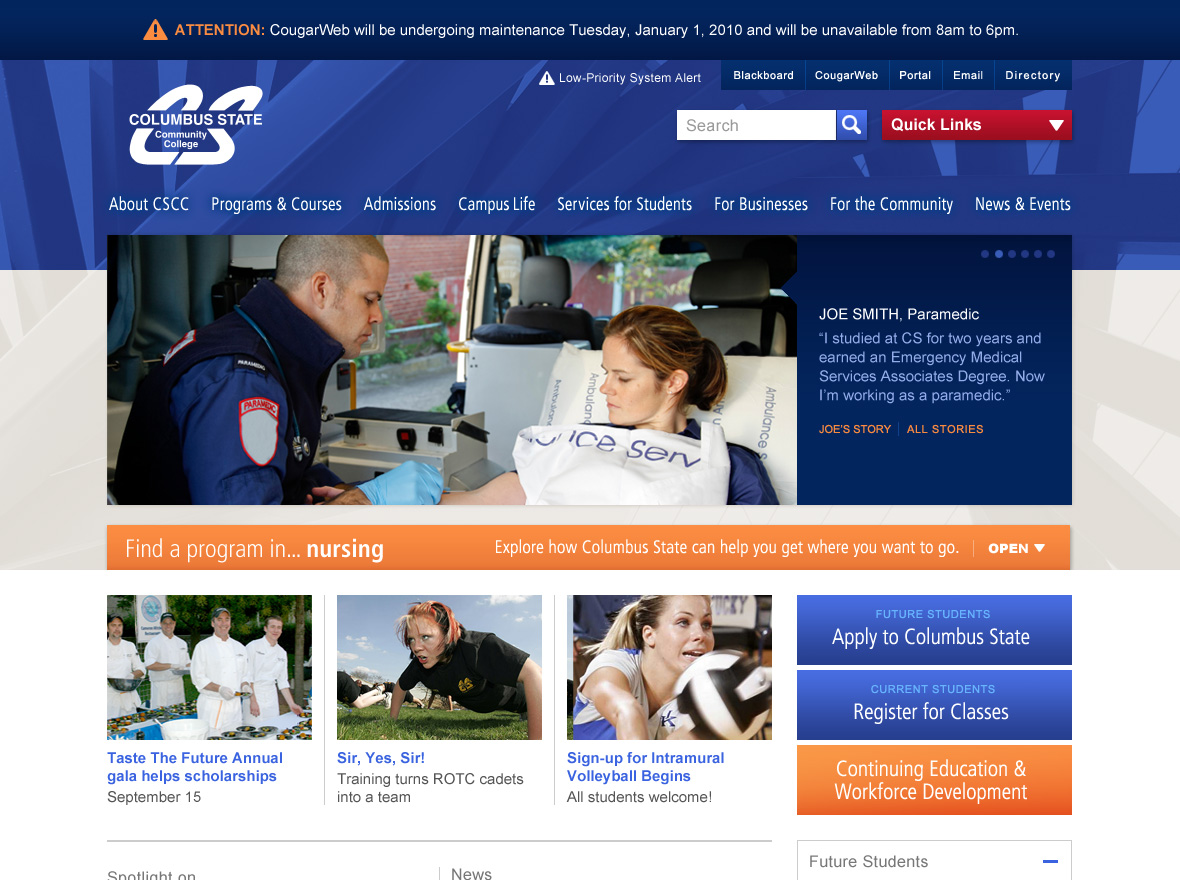

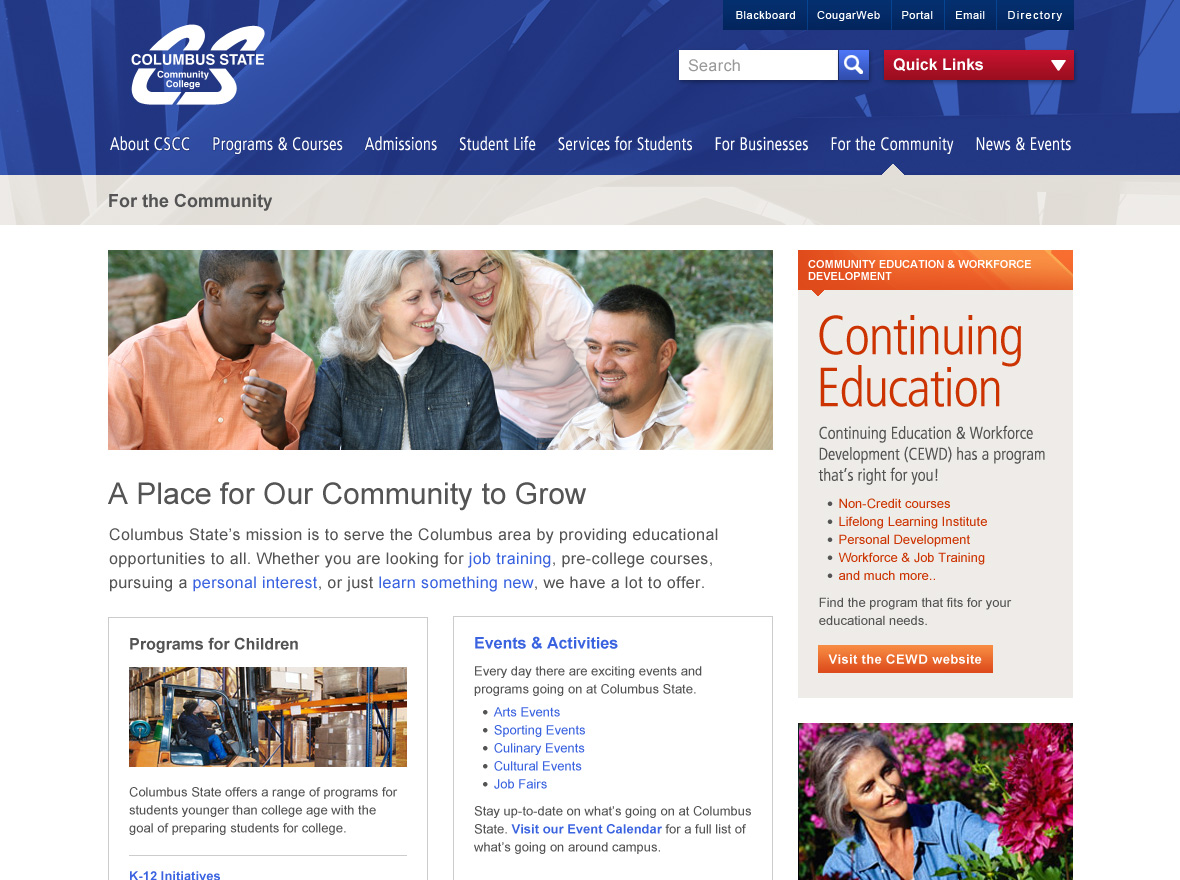

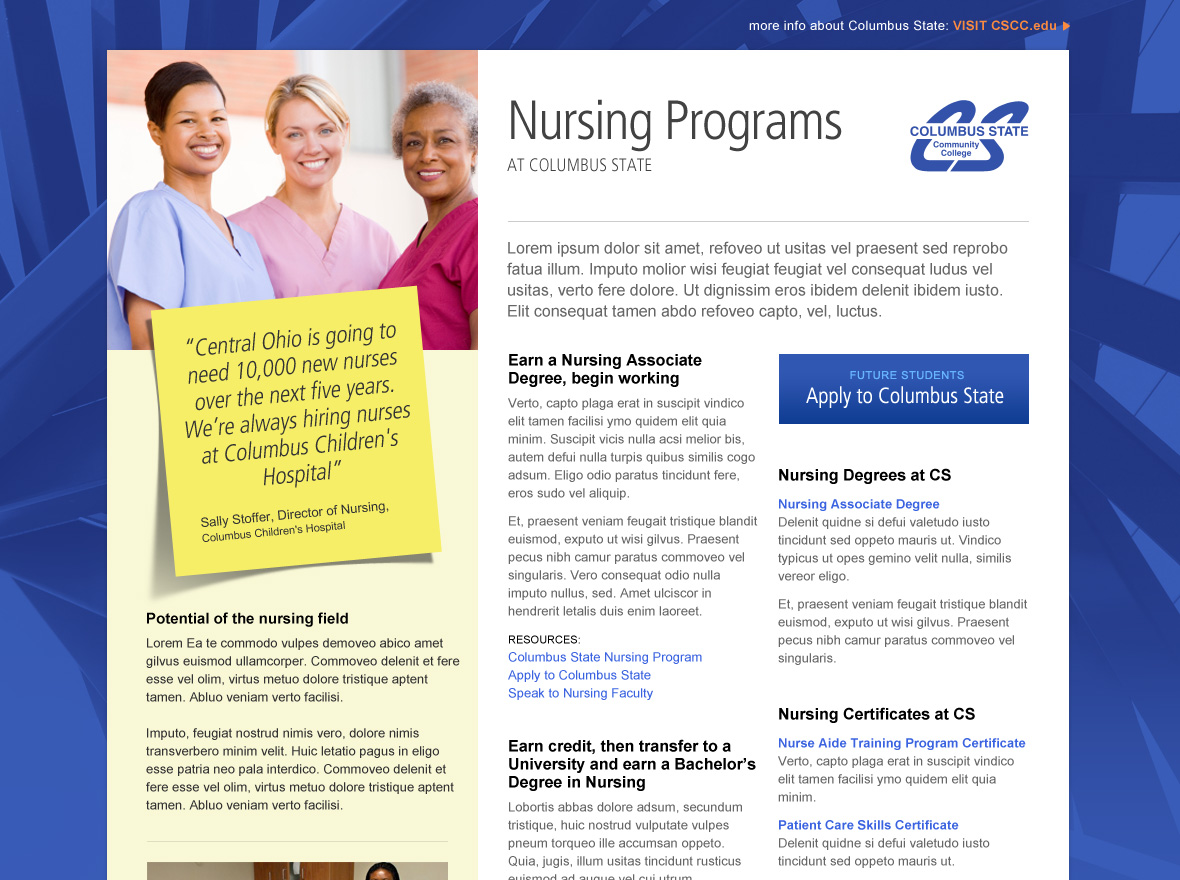
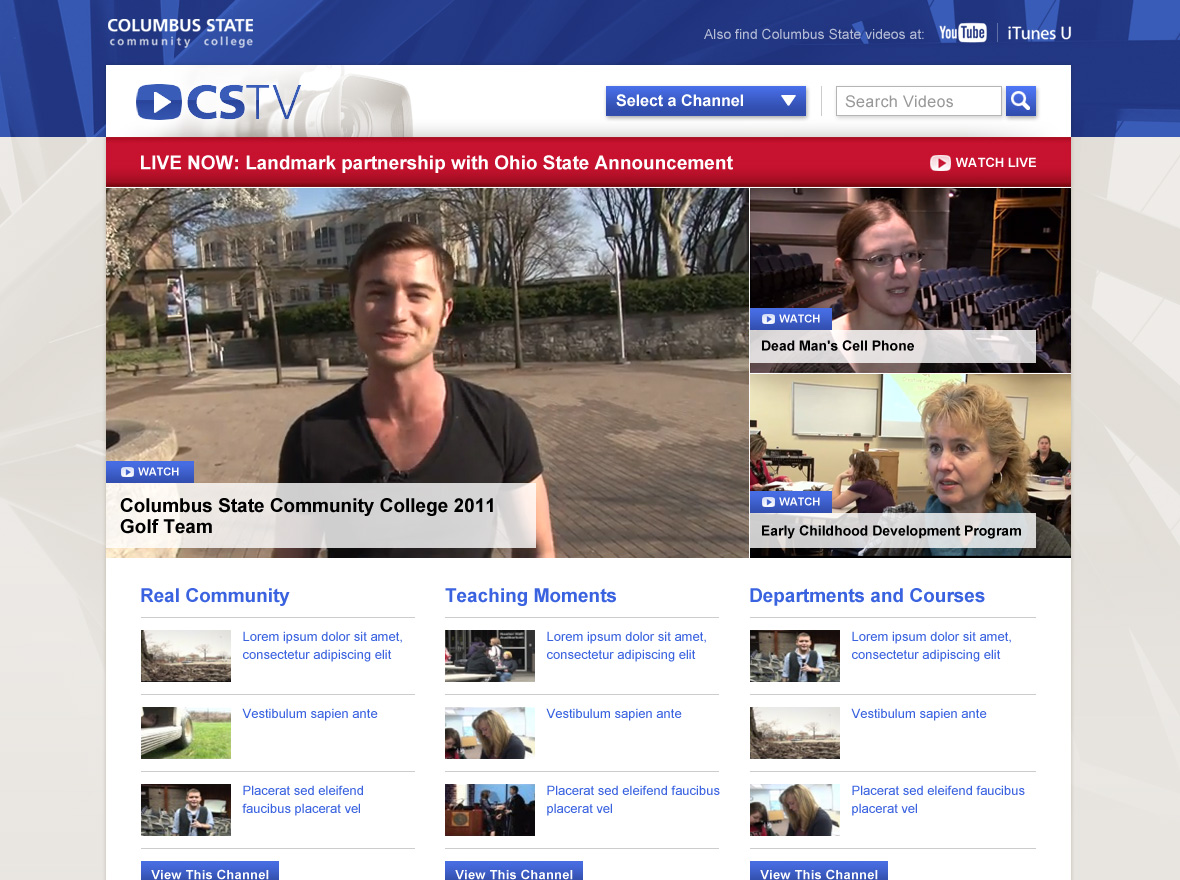
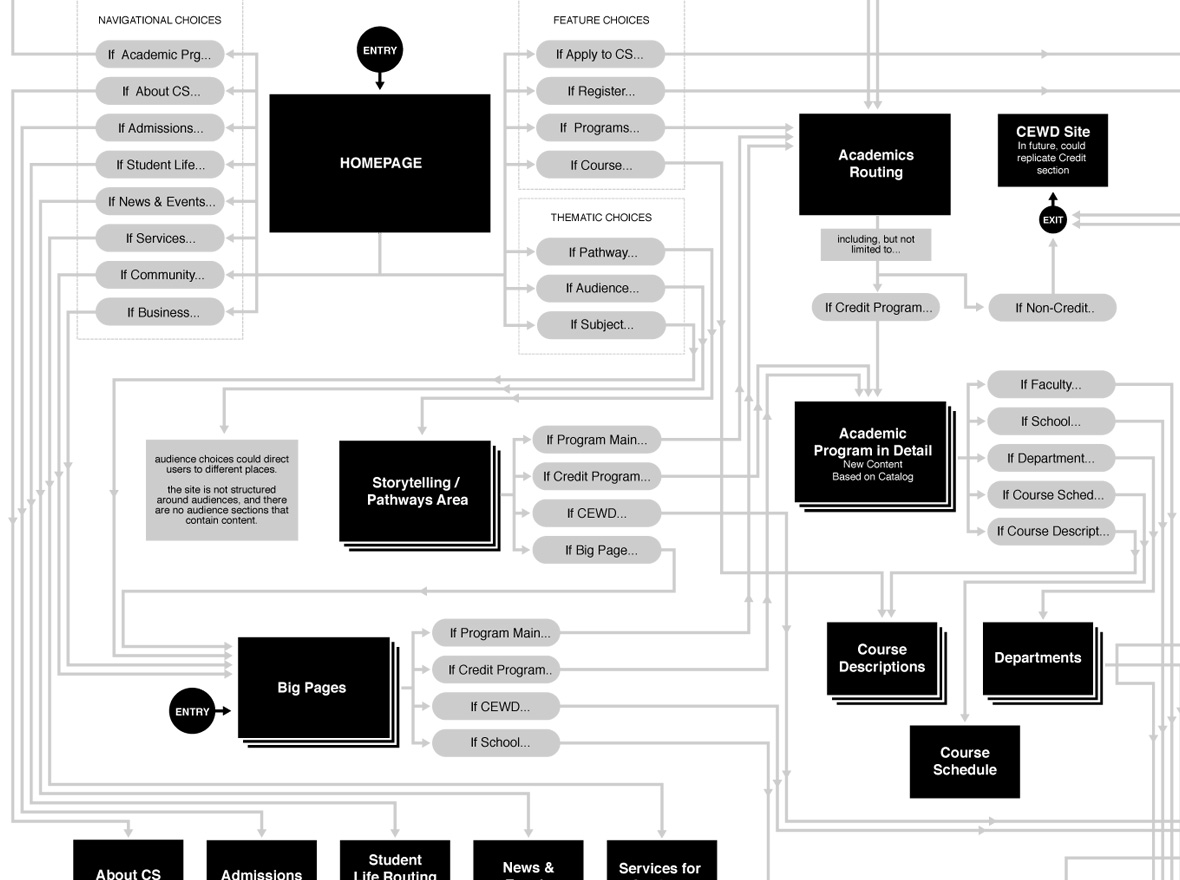
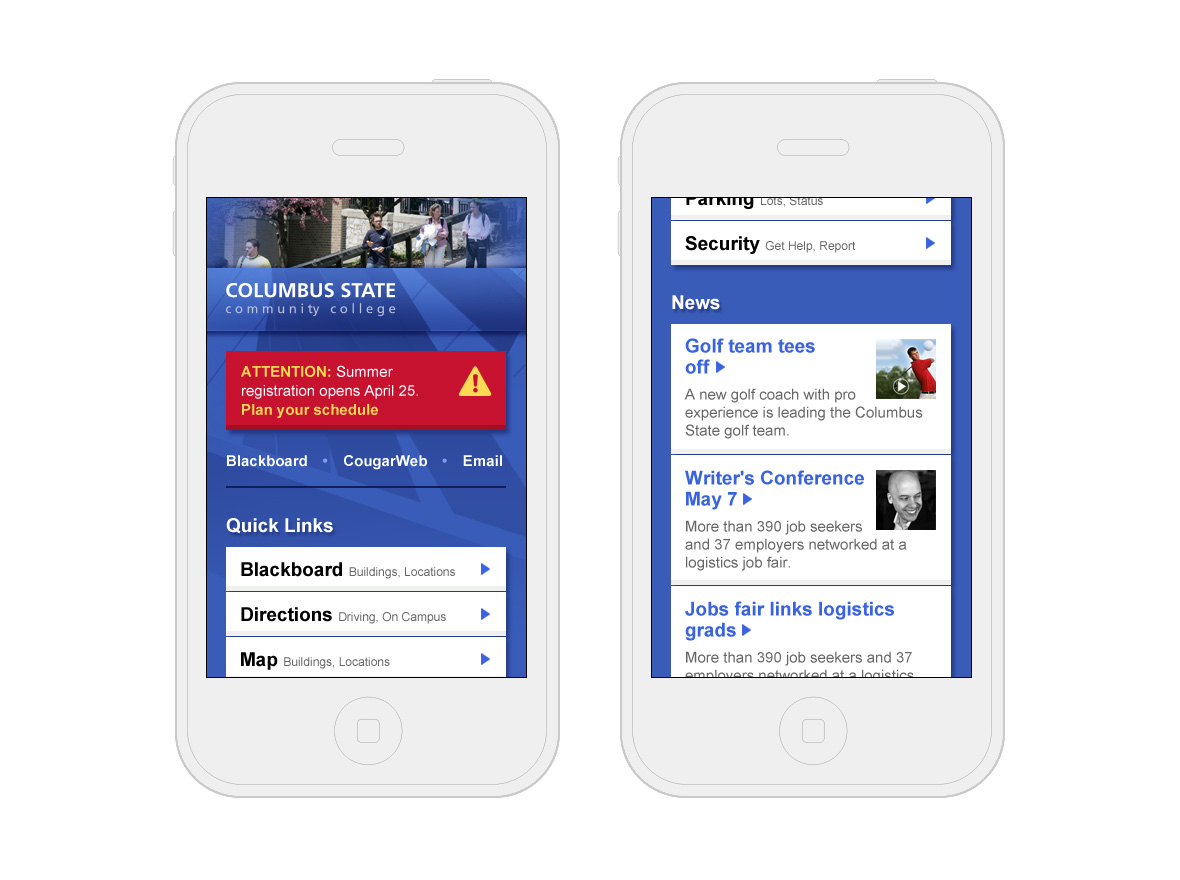

 Default: Small
Default: Small Small 1
Small 1 Small 2
Small 2 Medium
Medium Medium 1
Medium 1 Medium 2
Medium 2 Large
Large Large 1
Large 1 Large 2
Large 2